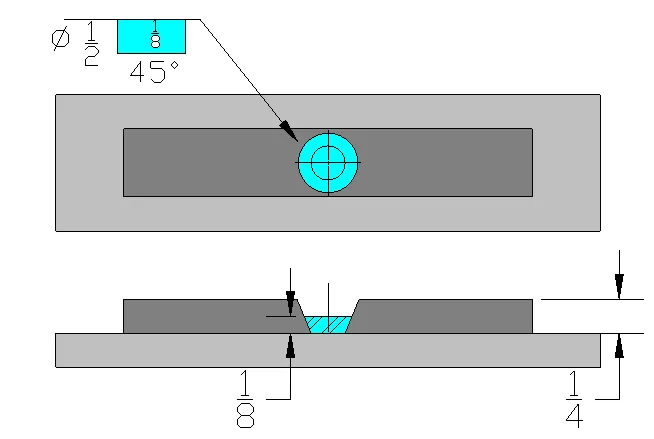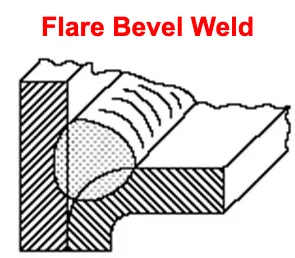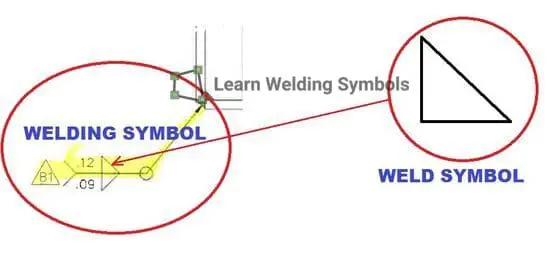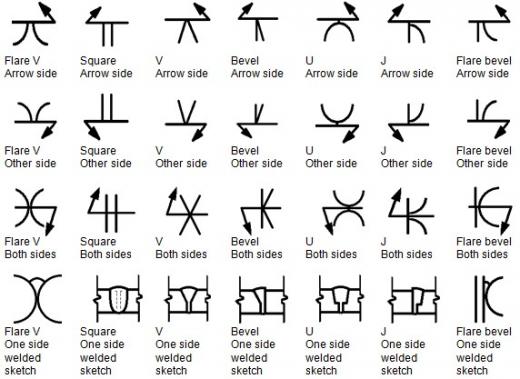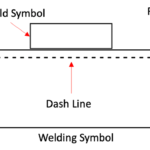CJP Weld Symbol
In this post, we’re shedding light on one of the most essential yet often misunderstood type of weld joint configuration known as – the Complete Joint Penetration (CJP) weld symbol. If you’re a welder or a welding student, understanding the CJP weld symbol is vital for welding quality and strength.
Introduction to Weld Symbols
Before diving into the specifics of the CJP weld symbol, let’s quickly recap what a weld symbol is. A weld symbol is a set of standardized shorthand signs and symbols used to convey detailed instructions about welding joint and its location.
The welding symbol structure consists of a reference line, an arrow, and a tail. Specific symbols representing the type of weld are placed on the reference line, and all these elements together form a welding symbol. Check this post to get a Deep Dive for WELD SYMBOLS.
What is a CJP Weld?
CJP stands for Complete Joint Penetration. It’s a type of weld that fully penetrates the thickness of the parts being joined, resulting in a weld that extends through the joint. CJP welds are typically used in situations where maximum strength is required, and the weld needs to be as strong as the base material.
In below example, the first image shows a single-V groove weld with Complete Joint Penetration (CJP) having a 1/8″ root gap. The 2nd image shows a Partial Joint Penetration aka PJP Weld, also a Single-V but only partial penetration with a depth of 1/4″.

Decoding the CJP Weld Symbol
The symbol for a CJP weld is quite simple – it’s a single bevel symbol (an inverted ‘V’) or a square groove symbol or any other weld type but clearly specifying CJP in the weld symbol tail section. This is because, in a CJP weld, the weld should extend the full thickness of the joint, so there’s no need to specify the depth of the weld.

Most important- if a weld is CJP, it is mentioned by placing CJP in the tail section of the weld symbol. So, user can know that is a CJP Weld.
Sometimes, the CJP weld symbol may include a supplementary symbol, like a convex contour symbol, if the face of the weld needs to be finished to a convex contour.
What Does a CJP Weld Mean for Welders?
If you’re a welder and see a CJP weld symbol on a blueprint, it means that the weld must fully penetrate the joint and fuse the joint’s entire thickness. This usually requires a high level of skill to achieve as it might involve careful preparation of the joint (like beveling or squaring the edges), multiple passes of welding, or even back gouging and then welding from the other side to ensure full penetration.
Conclusion
The CJP weld symbol, like other weld symbols, is an essential language in the welding industry. Understanding this symbol and the skills required to execute a CJP weld are crucial for welders, especially those working in industries where high-strength welds are required, like structural steel, shipbuilding, and heavy equipment manufacturing.
Mastering the CJP weld symbol and the technique it represents is a testament to your expertise and attention to detail. As we always say, being a welder is not just about fusing metals together; it’s about understanding the language of the trade – the symbols!



